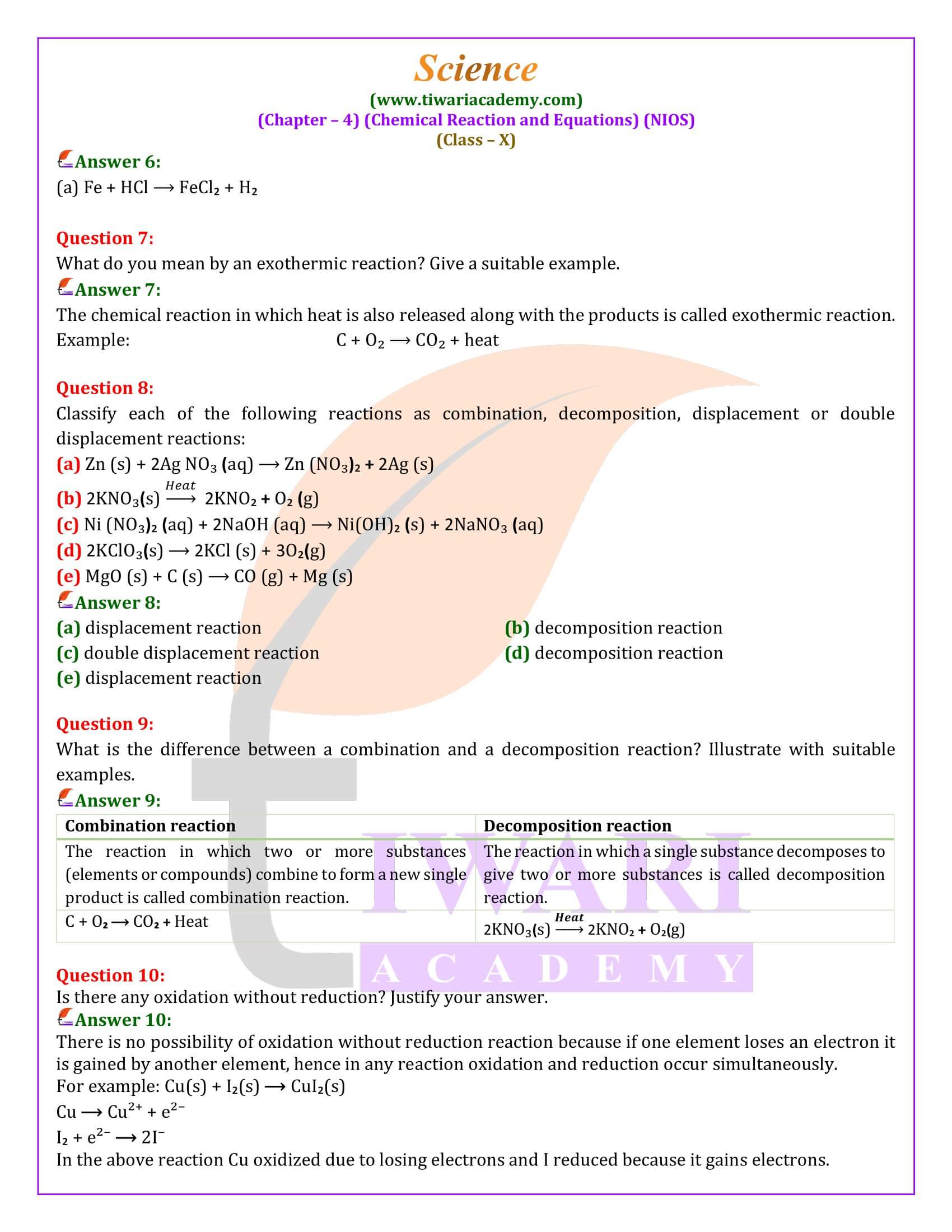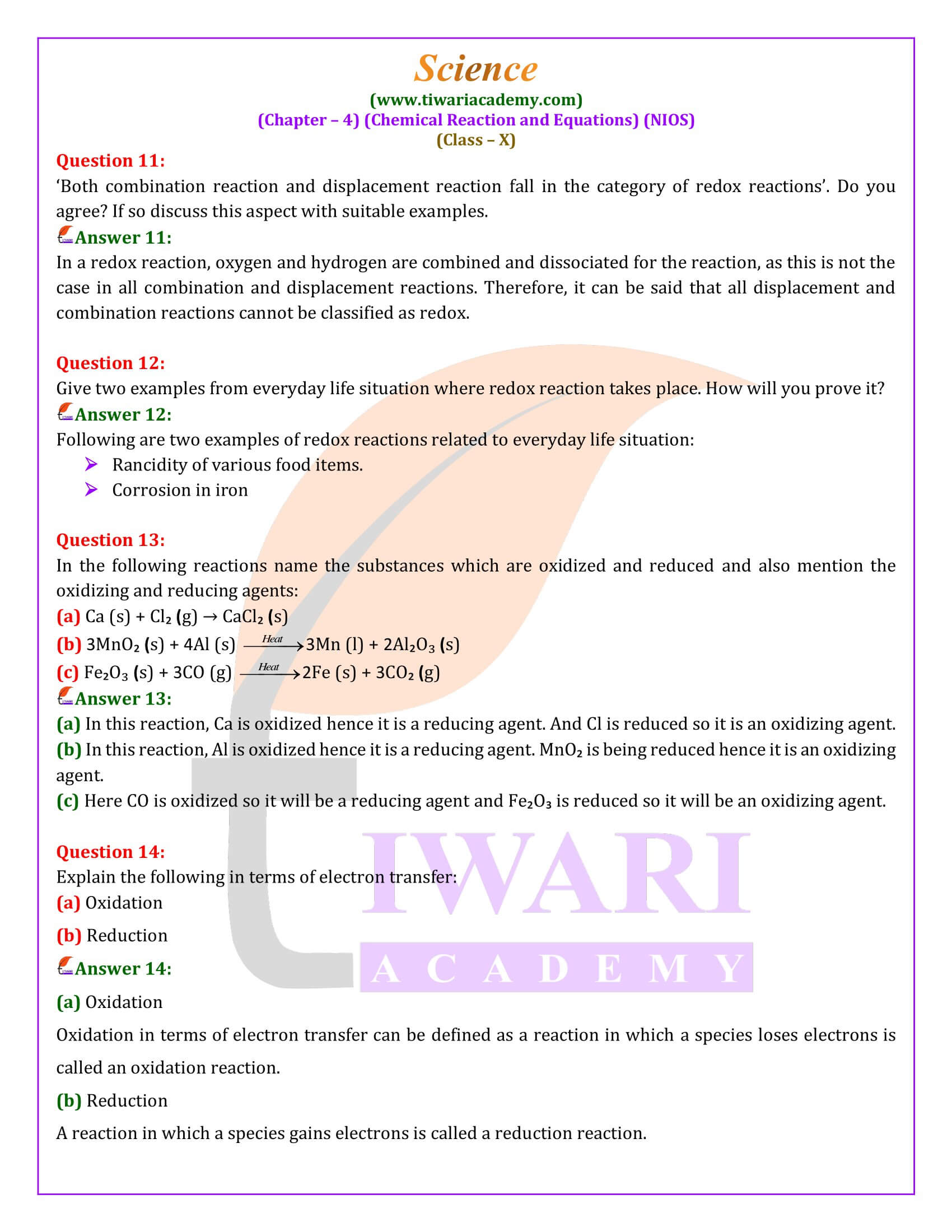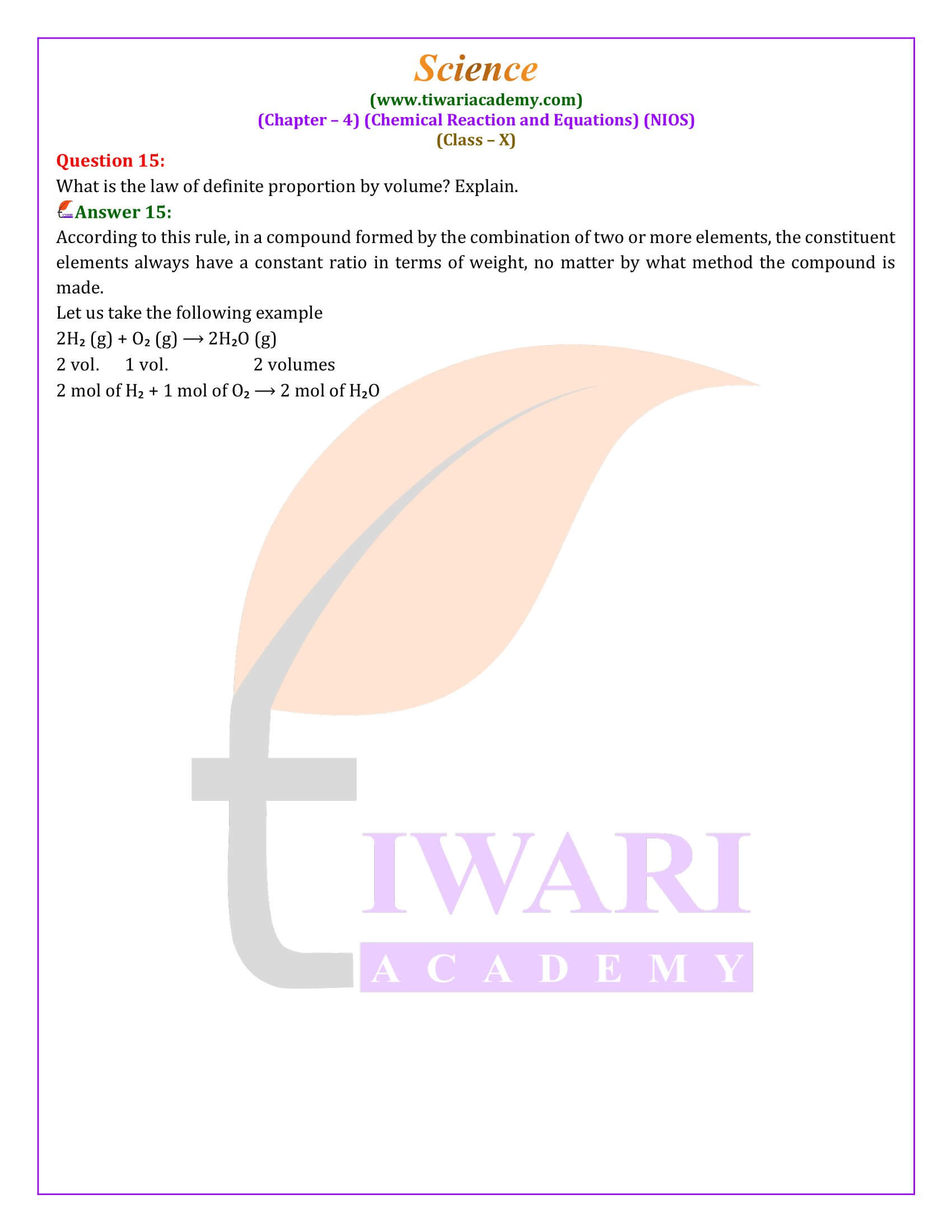NIOS Class 10 Science Chapter 4 Chemical Reaction and Equations solutions and explanation is given here in English and Hindi Medium. All the questions of National Institute of Open Schooling Science chapter 4 are well explained here with question answers.
NIOS Class 10 Science Chapter 4 Chemical Reaction and Equations
Chemical Reaction and Equations: A Comprehensive Overview
Chemistry is a branch of science that studies the composition, structure, properties, and change of matter. Our daily experiences are filled with examples of chemical reactions, from the rusting of iron to the cooking of food. In this detailed exploration, we focus on the intricate world of chemical reactions and equations, underscoring their significance in both our everyday lives and broader scientific endeavors.
The Essence of Chemical Reactions
Every day, we observe numerous changes around us, categorized into physical and chemical changes. For instance, melting ice represents a reversible physical change, whereas the transformation of milk into curd illustrates an irreversible chemical change. Chemical changes are characterized by the formation of new substances and are represented by chemical equations. This discussion delves into the formulation and balancing of chemical equations, the various types of chemical reactions, and their applications in real-world scenarios.
Crafting and Balancing Chemical Equations
Chemical equations serve as a shorthand method for describing chemical reactions, utilizing symbols and formulas instead of words. The law of conservation of mass mandates that the mass and number of atoms in the reactants must equal those in the products. This principle guides the balancing of chemical equations, ensuring that the equation adheres to the conservation laws. Through examples such as the combustion of magnesium and the reaction of zinc with sulfuric acid, the process of balancing equations is elucidated, highlighting the use of coefficients to maintain atomic and mass balance.
Diverse Types of Chemical Reactions
Chemical reactions can be broadly classified into combination, decomposition, displacement, and double displacement reactions, each with distinctive characteristics and examples:
Combination Reactions: These reactions involve the merging of two or more substances to form a new compound, exemplified by the burning of magnesium in air.
Decomposition Reactions: A single compound breaks down into two or more simpler substances, as seen in the decomposition of ferrous sulfate.
Displacement Reactions: One element displaces another from its compound, demonstrated by the reaction of iron with copper sulfate.
Double Displacement Reactions: Involve the exchange of ions between two compounds, leading to the formation of new compounds, such as the reaction between sodium sulfate and barium chloride.
Oxidation and Reduction in Chemical Reactions
Redox reactions, encompassing both oxidation and reduction processes, play a pivotal role in chemical reactions. Oxidation involves the gain of oxygen or loss of electrons, while reduction involves the loss of oxygen or gain of electrons. These reactions are integral to numerous chemical processes, including metabolism, combustion, and corrosion.
Practical Applications and Significance
Chemical reactions underpin a vast array of industrial processes, environmental phenomena, and everyday activities. From the rusting of iron (corrosion) to the spoiling of food (rancidity), understanding chemical reactions allows us to devise methods for prevention and control, demonstrating the profound impact of chemistry on our lives.
The study of chemical reactions and equations is fundamental to both the science of chemistry and the understanding of the world around us. Through the balancing of equations and classification of reactions, we gain insights into the transformation of matter, underlying energy changes, and the principles governing chemical processes. This knowledge not only enriches our comprehension of the natural world but also empowers us to innovate and address challenges in industry, medicine, and environmental protection.







